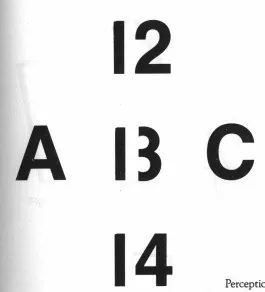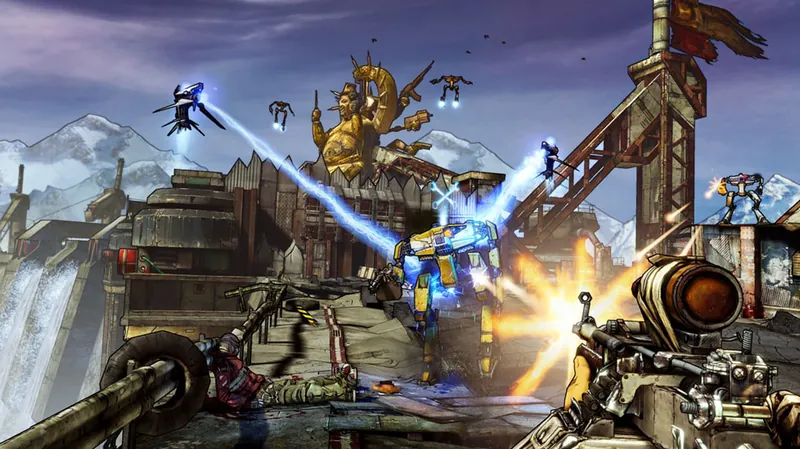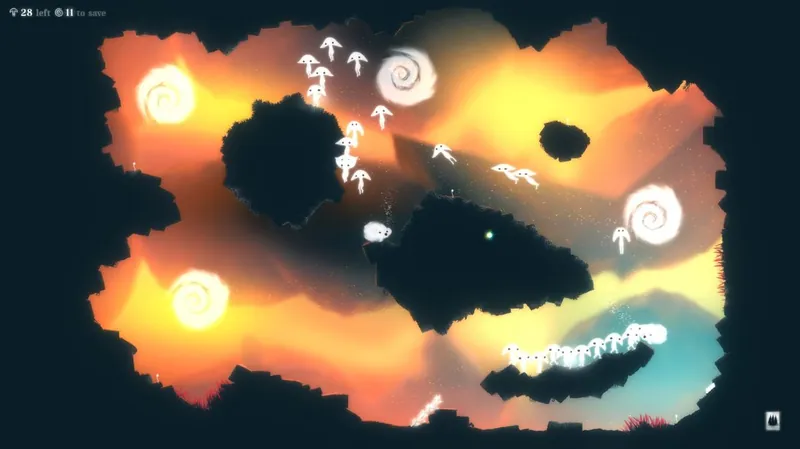http://www.tinker-entertainment.com/sitavriend/psychology-and-games/784/
By now you know that our brain is remarkable and weird. How it perceives things and how it can fool us. But you are not yet aware of the two different methods our brain uses to perceive the world: top-down processing and bottom-up processing. Bottom-up processing is automatic, we instantly know and understand what we have perceived. Top-down processing is a more deliberate process where we sometimes have to dig deep to understand what we have perceived. These two methods we use for perception are related to the dual-process theory, top-down processing is a form of system 2 thinking and bottom-up processing is a form of system 1 thinking. Bottom-up processing is always on and can help us quickly make sense of the world around us. Bottom-up processing happens when salient (outstanding) features of a stimuli draw attention. This stimuli can be a loud sound from the timer you set when you are cooking an egg or an alarm. It can also be something visual, a smell, taste or a tactile sensation.
 But bottom-up processing can fail us in some situations, especially when the stimulus is ambiguous or vague (Gosselin & Schyns, 2003). That’s when we use top-down processing to understand what is going on. With top-down processing we use memories, expectations and context to interpret the stimulus. We use top-down processing when we look at modern, abstract art or clouds. It isn’t very clear what we perceive (beside from the fact that we are looking at a canvas with paint or a white fluffy cloud) so we have to think effortful to attempt to understand.
But bottom-up processing can fail us in some situations, especially when the stimulus is ambiguous or vague (Gosselin & Schyns, 2003). That’s when we use top-down processing to understand what is going on. With top-down processing we use memories, expectations and context to interpret the stimulus. We use top-down processing when we look at modern, abstract art or clouds. It isn’t very clear what we perceive (beside from the fact that we are looking at a canvas with paint or a white fluffy cloud) so we have to think effortful to attempt to understand.
Most of the time we use bottom-up and top-down processing interchangeably to perceive the world around us. For this we use perceptual sets: the readiness to interpret a stimuli in a certain way. Perceptual sets prepare us to perceive things in a certain way like the ‘13’ or ‘B’ in the picture to the right. Perceptual sets depend on what you expect to see and the context of the stimuli. In the picture your expectations depend on whether you read from top to bottom or from left to right.
These different methods of perception processing are quite useful for game design (and art) as you can see in the Borderlands 2 screenshot. Using bright, saturated colors and heavy lines for objects of interest such as an enemy immediately draws the attention of the player. These ‘standing out’ or salient features help the player distinguish between what is important and what is not.
Borderlands 2 aided visual bottom-up processing. They used bright and more saturated colors for objects of interest such as enemies.
Signal detection theory plays with the ideas of bottom-up and top-down processing. The theory states that the information the player is getting from the game consists of ‘signals’ and ‘noise’. The visual and auditory information from any game are made up of noise and signals. Signals are objects of interest for the player such as collectable or special items, enemies, health packs or a direction the player should go. The signals in a game is any information that is important for the player to know. Noise would be anything that is less important to the player such as the environment art or the background music. As a designer and artist, you can play with the ideas of the signal detection theory. Many games should aim for weak noise and strong signals, important things should be easy to spot and recognize within the blink of an eye. Though hidden object games can benefit more from strong noise and weak signals else the game would be too easy.
Spirits
Spirits is a mobile and pc game that is a good example of how our methods of perception work in combination with the signal detection theory. In this puzzle game you guide spirits across dangers to a magical swirl. The game has three layers of objects: the boundaries of the level in black, the colorful background and the objects of interest. The main objects of interests are the spirits with which you play and the swirls which is the destination of the spirits. There are also gusts of wind represented by floating particles in the direction the wind is blowing. See how the characters and swirls are the most salient (outstanding) objects on the screen, they draw your attention. The designers and artists chose white as a color for the most important things in the game to make them standout more. As a player you immediately figure out that you have to do something with these characters and swirls. This is a good example of bottom-up processing. The artists and designers used size and shape to clarify the difference between the spirits and the swirls. The colorful background could have easily drawn more attention than the spirits, but the use of sharpness prevents this. The colors of the background are blurry and not the brightest things in the game. Spirits really aids the player’s perception with bottom-up processing by using color, brightness, sharpness and size.
Ideas and suggestions
Perception will mainly affect the artists’ work but it also has a place in game design. Both the designer and the artist should be aware how their work affects how the player plays the game. Any game can benefit from the different processes we use to perceive a game no matter the quality of the art. Of course it’s good to realize that the screen size also has an effect on the player’s perception.
Depending on the type of game you are working on you should decide if the objects of interest in your game should standout or maybe which ones should standout (more). In many cases you want the player to instantly notice most of the objects of interest so they should draw attention. You can achieve this by changing the size of the object. Objects that are bigger that the others immediately standout. Color also have an effect, especially red draw attention. Player can easily find red objects even if they are partially covered. Artists might want to be careful using red for less important things or the background. Using a different, more vibrant color scheme for objects of interest and a more monochrome color scheme for less important information can help as well. The use of sharpness also works to grab to player’s attention. Think about a door that is more detailed and sharp compared to doors that are more blurry and less detailed. The sharp, detailed door draws the most attention.
Often in a game there are more than one different objects that are of interest to the player, or the environment art is quite detailed. In that case you can benefit from redundancy: alternative physical forms make it easier to distinguish between similar types of information. Do not just use different color that attract attention for different objects of interest use sharpness, brightness and size as well. Using other features such as shape can help, and allows colorblind people to play your game.
Level designers should benefit from these perception techniques as well. Making some places in a scene bigger, brighter or more colorful attracts the player’s attention. As a result, players are naturally drawn to where you want them to go and the game will feel less linear.





That was an interesting reading, thanks for sharing!